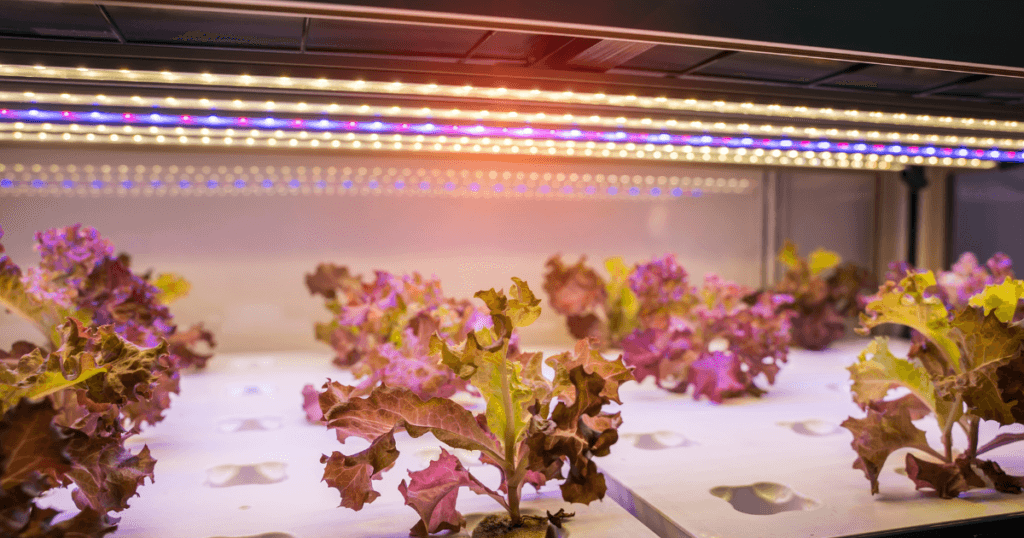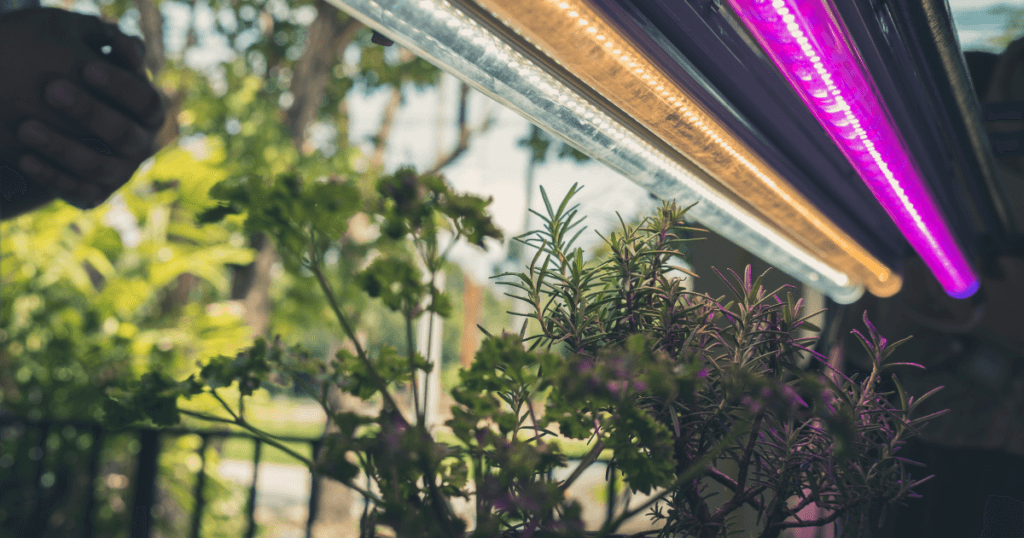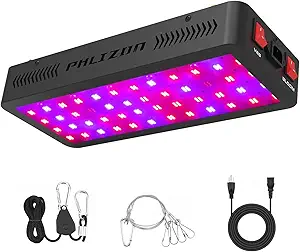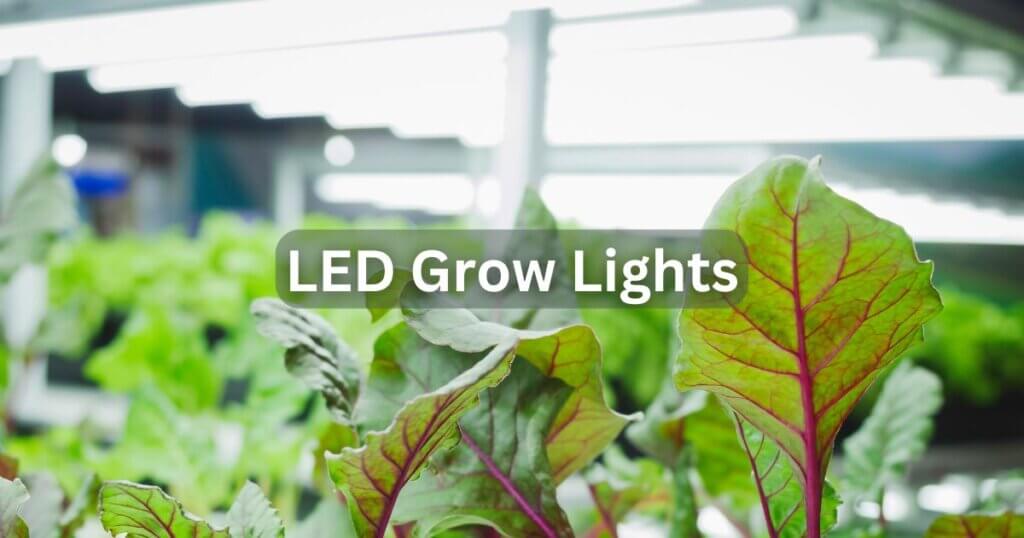Maximizing your Crop Yields with the Right Indoor Farming LED Lights

Some of the links in this post are affiliate links. As an Amazon Associate, we earn a referral fee from qualifying purchases—at no extra cost to you.
Regarding indoor farming, the right lighting is crucial for maximizing crop yields. With technological advancements, LED lights have become the go-to choice for indoor farmers worldwide. This article will explore the benefits and considerations of using LED lights for indoor farming. We will delve into the key factors to consider when selecting LED lights, their impact on crop growth, and how to optimize their usage to achieve exceptional yields. By the end, you will have a comprehensive understanding of how to harness the power of indoor farming LED lights to boost your crop production.
Table of Contents
Understanding the Role of LED Lights in Indoor Farming
What are LED Lights?
LED, or Light Emitting Diode, are energy-efficient lighting fixtures that produce light by moving electrons in a semiconductor material. They have gained immense popularity recently due to their long lifespan, low energy consumption, and versatility.
Benefits of LED Lights for Indoor Farming
- Energy Efficiency: LED lights consume significantly less energy than traditional lighting options, reducing operational costs for indoor farmers.
- Customizable Light Spectrum: LED lights can be tailored to emit specific wavelengths of light, allowing farmers to optimize the light spectrum for different growth stages of plants.
- Heat Management: LED lights produce minimal heat, reducing the risk of heat damage to plants and enabling them to be placed closer to the crop canopy.
- Longevity: LED lights have a lifespan of up to 50,000 hours, ensuring long-term cost-effectiveness and minimal replacement needs.
Factors to Consider when Choosing Indoor Farming LED Lights
To maximize your crop yields, it is essential to consider several factors when selecting LED lights for indoor farming.

Light Intensity
The intensity of light directly affects plant growth and yield. Different crops have varying light intensity requirements at different growth stages. Choosing LED lights that can provide the desired light intensity for optimal photosynthesis and growth is crucial.
The VIVOSUN VS2000 LED Grow Light is a high-performance grow light offering dimmable intensity and a full spectrum, making it ideal for various crop stages and maximizing yields.
Light Spectrum
The light spectrum emitted by LED lights plays a vital role in plant growth and development. Different wavelengths influence various physiological processes, such as germination, flowering, and fruiting. By selecting LED lights with customizable spectra, farmers can tailor the lighting conditions to meet the specific needs of their crops.
The Phlizon Full Spectrum LED Grow Light with UV and IR is a popular choice for this, offering a rich spectrum that includes UV and infrared to support all stages of plant growth—from seedling to harvest.
Light Uniformity
Uniform light distribution across the entire crop canopy is essential to ensure consistent growth and minimize variations within the plants. When choosing LED lights, consider their ability to provide uniform light coverage and avoid hotspots or areas with inadequate illumination.
Energy Efficiency
Indoor farming operations consume significant energy, making energy efficiency a crucial consideration. Opt for LED lights with high energy efficiency ratings to minimize power consumption while maximizing crop yield.
Durability and Lifespan
Investing in durable LED lights with a long lifespan is essential to avoid frequent replacements and associated costs. Look for lights with robust construction and reliable components to ensure longevity and optimal performance throughout their lifespan.
Optimizing LED Light Usage for Maximum Crop Yields
Light Duration and Photoperiod
The duration of light exposure and photoperiod significantly impact plant growth and development. Different crops have specific light duration requirements at different growth stages. By carefully managing the light duration and adjusting the photoperiod, farmers can optimize crop yields.
Light Distance and Canopy Penetration
The distance between the LED lights and the crop canopy is crucial in achieving optimal light distribution and canopy penetration. Positioning the lights at an appropriate length is essential to ensure uniform light coverage and promote photosynthesis in all parts of the plant.
Lighting Schedule and Automation
Maintaining a consistent lighting schedule is essential for plant health and growth. Consider using automated systems that allow you to program and control the lighting schedule. This ensures the plants receive the required light at the right time, even if you are not physically present.
You can simplify this with the BN-LINK Digital Programmable Timer, which automates your grow light schedule and ensures your crops get consistent light exposure every day—even when you’re away.
Supplemental Lighting
In some cases, natural light may not be sufficient for optimal plant growth, especially in regions with limited sunlight or during the winter months. Supplemental lighting with LED lights can bridge this gap and provide the additional light needed to maximize crop yields.
The GE BR30 LED Grow Light Bulbs – 2-Pack are affordable and energy-efficient supplemental lights, perfect for small-scale indoor farms or window gardens needing a light boost during cloudy or winter months.
Light Management and Control Systems
Investing in advanced light management and control systems can enhance the efficiency and effectiveness of LED lighting in indoor farming. These systems allow you to monitor and adjust light intensity, spectrum, and duration according to the specific needs of your crops. They precisely control lighting parameters, ensuring consistent and optimized growth conditions.
Consider using the VIVOSUN Grow Light Controller, which enables remote management of your lighting system with smart controls, giving you precision and flexibility over your entire grow setup.
Considerations for Different Crop Types
Different crops have unique lighting requirements. Some crops, such as leafy greens and herbs, thrive under higher light intensities, while others, like flowering plants, may require specific light spectra. Understanding the lighting preferences of your particular crops is essential to select the most suitable LED lights for maximum yield.
Conclusion
Selecting the right LED lights for indoor farming is a critical step towards maximizing crop yields. By considering light intensity, spectrum, uniformity, energy efficiency, and lifespan, you can make informed choices that will benefit your plants and your bottom line. Optimizing LED light usage through proper light duration, distance, scheduling, and control systems further enhances the growth and productivity of your crops. With the right combination of LED lights and smart lighting management, you can achieve exceptional results in your indoor farming endeavours.
Remember, when it comes to indoor farming, the right LED lights are not just a source of illumination; they are the key to unlocking the full potential of your crops.
FAQs – Indoor Farming LED Lights
1. How do LED lights compare to other lighting options like fluorescent or incandescent lights for indoor farming?
This FAQ could highlight the differences in energy efficiency, light spectrum control, lifespan, and heat output between LED lights and other common indoor farming lighting options.
2. Can LED lights be used for both hydroponic and soil-based indoor farming?
This question would address whether LED lights are suitable for different farming methods and how their use might vary between hydroponic systems and traditional soil-based farming.
3. What are the costs associated with setting up an LED lighting system for indoor farming?
A detailed breakdown of the initial investment costs, including the price of LED fixtures, controllers, and any additional setup equipment, as well as potential savings in energy and maintenance over time.
4. What are the potential drawbacks of using LED lights in indoor farming?
This could cover any limitations or challenges, such as the initial cost of LED systems, the need for specialized light control systems, or the learning curve for managing optimal lighting conditions.
5. How can indoor farmers adjust LED lighting to accommodate different growth stages of plants?
This question would explain how farmers can manipulate the light spectrum, intensity, and photoperiod for different stages of plant development, from germination to flowering and fruiting.
Useful Resources on Indoor Farming LED Lights
- LEDs and basil leaves: Urban farming pilot program blossoms in Glens Falls: This article from the Times Union discusses a vertical farming initiative in Glens Falls, where basil and other greens are grown hydroponically under LED lights, maximizing productivity in limited spaces.
- Light-emitting diode: The Wikipedia page on LEDs provides an overview of their applications, including their use in indoor cultivation. It highlights how LEDs offer energy-efficient, customizable lighting solutions that optimize plant growth by providing precise control over light spectra, intensity, and photoperiods.
- Plant LED incubator: This Wikipedia article explains the concept of plant LED incubators, which use LEDs to efficiently control the light spectrum, intensity, and duration, promoting rapid and high-quality plant growth in controlled environments.
- Growroom: The Wikipedia entry on growrooms discusses various aspects of indoor plant cultivation, including lighting. It notes that full-spectrum indoor LED grow lights are becoming more common due to their low energy requirements and minimal heat output.
- Your Grow Light Is Probably Too Far from Your Plants—Here’s How to Place It Correctly: An article from Better Homes & Gardens emphasizes the importance of positioning grow lights at appropriate distances from plants to ensure optimal light intensity, which is crucial for effective photosynthesis and healthy growth.







